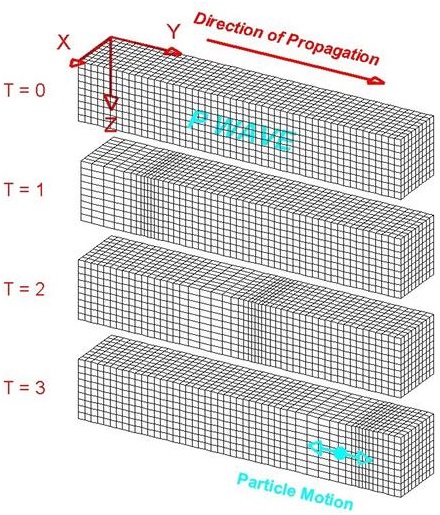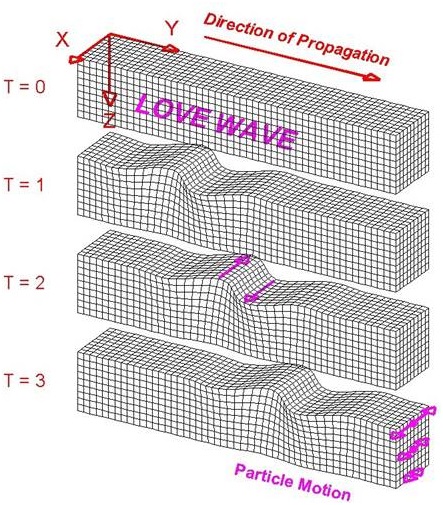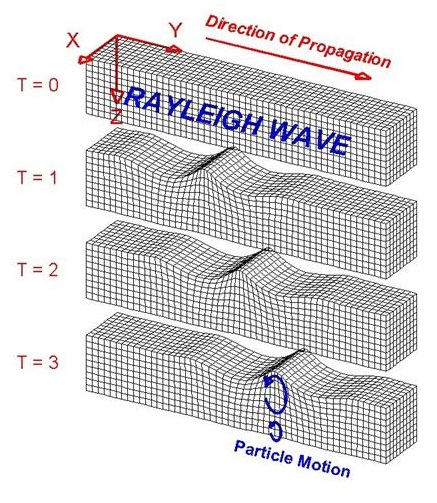Detailed geophysical and geological investigations to identify copper lead and zinc mineralization around Ambaji, Banaskantha district are in progress.

 Skip To Main Content
Skip To Main Content
Seismology is the study of earthquakes and seismic waves.
Sudden release of energy by Earth is known as Earthquake.
A seismologist is a scientist who studies earthquakes and seismic waves.
Although there have been several studies to predict the earthquakes, but earthquakes cannot be predicted. However some precursory changes in different geophysical parameters of Earth like gravity field, magnetic field, change in water level, Radon Gas emission, Helium gas emission etc. have been observed by a few seismologists in some cases.
Seismograph is an instrument that records the earthquake.
Seismic waves are the waves of energy caused by the earthquake within the earth or an explosion. They are the energy that travels through the earth and is recorded on seismographs.
There are several different types of seismic waves. Different waves travel in different ways. The two main types of waves are body waves and surface waves. Earthquakes radiate seismic energy as both body and surface waves.
Body waves can travel through the earth's inner layers, Traveling through the interior of the earth, body waves arrive before the surface waves emitted by an earthquake. These waves are of a higher frequency than surface waves.
The first kind of body wave is the P wave or primary wave. This is the fastest kind of seismic wave, and, consequently, the first to 'arrive' at a seismic station. The P wave can move through solid rock and fluids, like water or the liquid layers of the earth. It pushes and pulls the rock it moves through just like sound waves push and pull the air. Have you ever heard a big clap of thunder and heard the windows rattle at the same time? The windows rattle because the sound waves were pushing and pulling on the window glass much like P waves push and pull on rock. Usually people can only feel the bump and rattle of these waves.
P waves are also known as compressional waves, because of the pushing and pulling they do. Subjected to a P wave, particles move in the same direction that the wave is moving in, which is the direction that the energy is traveling in, and is sometimes called the 'direction of wave propagation'.

Surface waves can only move along the surface of the planet like ripples on water. Traveling only through the crust, surface waves are of a lower frequency than body waves, and are easily distinguished on a seismogram as a result. Though they arrive after body waves, it is surface waves that are almost entirely responsible for the damage and destruction associated with earthquakes. This damage and the strength of the surface waves are reduced in deeper earthquakes.

The first kind of surface wave is called a Love wave, named after A.E.H. Love, a British mathematician who worked out the mathematical model for this kind of wave in 1911. It's the fastest surface wave and moves the ground from side-to-side. Confined to the surface of the crust, Love waves produce entirely horizontal motion.
The other kind of surface wave is the Rayleigh wave, named for John William Strutt, Lord Rayleigh, who mathematically predicted the existence of this kind of wave in 1885. A Rayleigh wave rolls along the ground just like a wave rolls across a lake or an ocean. Because it rolls, it moves the ground up and down, and side-to-side in the same direction that the wave is moving. Most of the shaking felt from an earthquake is due to the Rayleigh wave, which can be much larger than the other waves.

Copyright © 2017 - All Rights Reserved by - Official Website of Institute of Seismological Research, Government Of Gujarat, India.
Note: Content on this website is published and managed by Institute of Seismological Research.
For any query regarding this website, please contact the web information manager Mr. Jignesh Patel (Technical Officer) : email id-dg-isr[at]gujarat[dot]gov[dot]in
